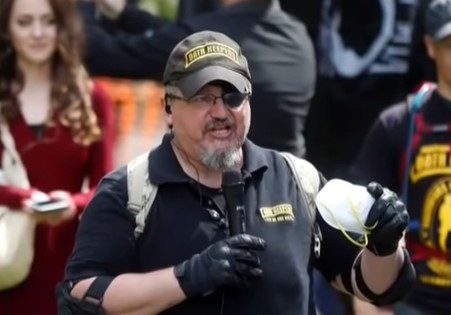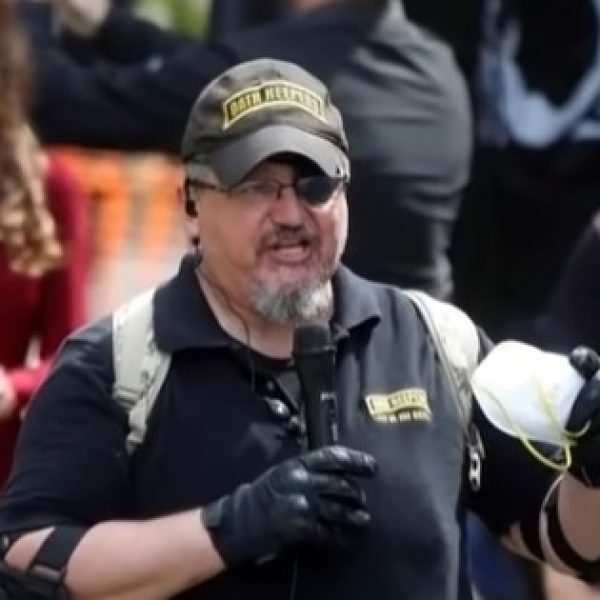
Oath Keepers President Stewart Rhodes
“It’s a complete clown show in there as far as witnesses and prosecution,” said a courtroom observer, following the trial of Oathkeepers organization founder Stewart Rhodes, Kelly Meggs, Kenneth Harrelson, Jessica Watkins, and Thomas Caldwell in DC District Court today.
Prosecutors attempted to show how Oathkeepers planned an ‘insurrection’ by playing a partial recording of the group’s Nov. 2020 GoToMeeting. Those in the courtroom couldn’t hear Stewart Rhodes’ voice clearly. There were no subtitles to discern what he said.
One of Rhodes’ lawyers, Edward Tarpley, expressed concerns before trial about the lack of context in this recording.
“It is not evident how much of the conversation was lost before the recording began,” Tarpley said.
“However, certainly any introduction or explanation for the purpose of the meeting was lost. “
“The introduction explaining the purpose of the meeting would be necessary to interpret the later contents, not just theoretically but specifically necessary for this conversation when the contents are read or listened to.”
Two weeks before this trial, the government refused to provide counsel for Thomas Caldwell with any information about the person who recorded this.
That individual-Abdullah Rasheed- took the stand today as a government witness.
Rasheed, who claimed to be part of the West Virginia Oathkeepers-said he heard “storming the White House” in the meeting. Yet this phrase did not appear to come up anywhere in today’s recording.
Rasheed said he contacted the FBI before and after Jan. 6th. The defense brought up how Rasheed asked the government to change his identity as a condition for testifying.
Who is Rasheed?
Rasheed has changed his name at least six times. He did not attend the group’s in-person events, nor did he understand the group’s mission and core values though claiming to be part of it.
Another government witness-Mike Adams-contacted the FBI about a public letter to President Trump which Stewart Rhodes posted online. Adams personally disagreed with the letter.
While Adams stepped down as FL chapter leader and claimed to distance himself from the group, he remained connected to Oathkeepers’ chats and online communications.
In court, he clung to the fact he “was a lifetime member,” using “we” and “us” to somehow attach himself to a group he no longer wished to connect with.
A third government witness, FBI Special Agent Michael Palian, depicted the Oathkeepers’ use of generalized Google maps of the DC area as supposed evidence of a plot to overthrow the government.
Palian revealed the Oathkeepers had an operations plan. This was a plan to guard “against Antifa and criminal elements in an urban setting”-not against Capitol Police, DC Metropolitan Police, or other law enforcement. The highly trained military group had no diagrams depicting the layout of the Capitol which it is accused of “breaching.”
“Government prosecutors are just trying to prove their narrative by inflaming the jury with the idea of guns and maps,” said a second courtroom observer.
The public should recognize how before this trial, the government used broad themes to challenge these same individuals in the Caldwell case. When its investigation found nothing to implicate Thomas Caldwell, this case was opened.
There is currently no telephone access for the public to listen in to the trial.


Join the conversation
Please share your thoughts about this article below. We value your opinions, and would love to see you add to the discussion.